Ah, the promise: “Now anyone can ask a question in plain English and our AI will instantly show them the top-performing product line this quarter!”
It sounds like the holy grail of data democratization. Just wire up a large language model (LLM) to your data catalog, call it a “Co-Pilot,” and — voilà — your business users become data-savvy strategists overnight.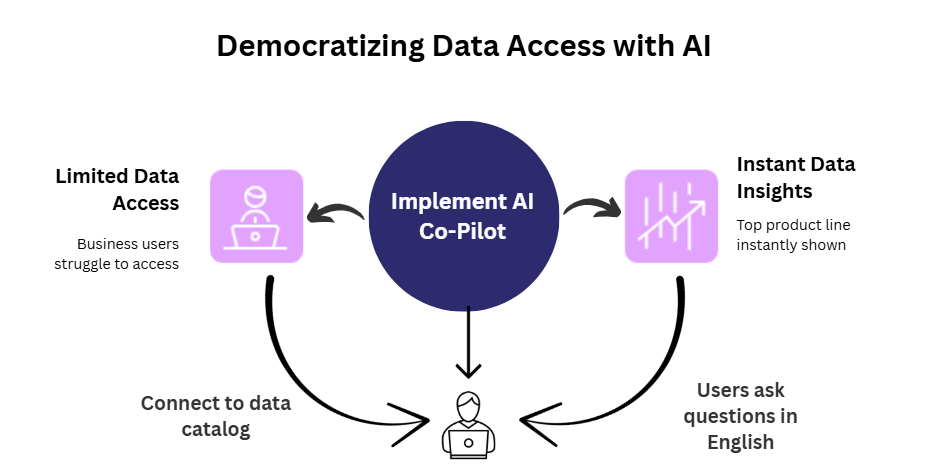
It’s a compelling story. And I’ll admit, I once bought into the narrative myself. The idea that natural language could become the universal interface for data? Groundbreaking. But after years of enabling data modernization at scale—across hybrid cloud ecosystems, legacy tech stacks, and real-world organizational complexity—I’ve seen the gap between expectation and execution up close.
Let’s be clear: there are real benefits.
-
LLMs make it easier to navigate schemas, glossaries, and lineage.
-
They lower the technical threshold for engaging with data.
-
They scaffold faster onboarding for new users.
But if you think this setup delivers real-time, enterprise-grade insights—think again.
Here’s why simply wiring an LLM to your catalog doesn’t get you the governed intelligence your business needs:
1. Metadata ≠ Business Reality
An LLM might spot a table called sales_qtrly and a field named net_revenue. That’s a start. But it won’t see: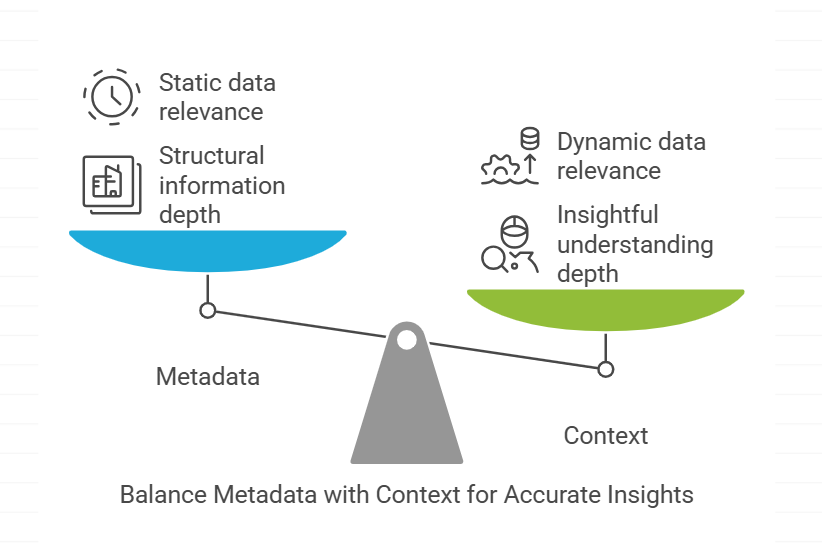
-
That the field was deprecated two months ago.
-
That the logic behind the metric changed mid-quarter.
-
Or that the pipeline feeding Q2 data is delayed due to upstream failures.
Yet it still confidently answers: “Which product line drove the most profit this quarter?” It returns something—but it’s not trustworthy. Because the LLM lacks business rule awareness, metric intent, and data freshness checks.
Metadata reveals structure. But insight demands context. Without it, every answer is a risk.
2. No Semantic Layer = Inconsistent Insights
Ask an LLM: “Show me revenue for the last three months.” Simple? Not really.
-
Does “revenue” mean gross, net, or recognized?
-
Are we talking calendar months or fiscal periods?
-
Are we including all countries or specific geographies?
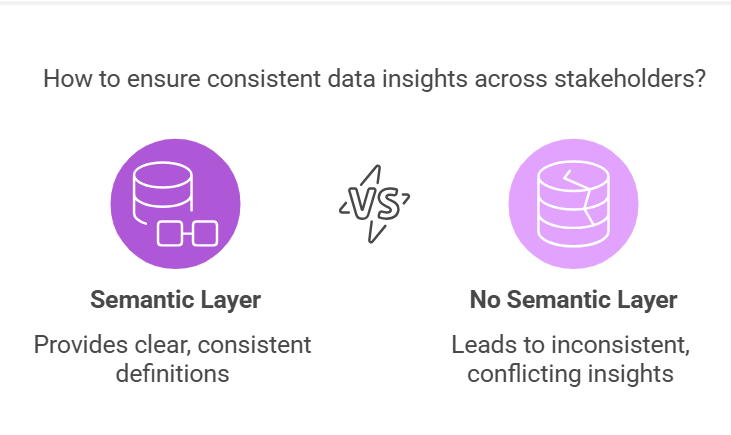 Without a semantic layer—a governed definition model—LLMs guess. And those guesses cause chaos:
Without a semantic layer—a governed definition model—LLMs guess. And those guesses cause chaos:
-
One stakeholder sees a chart and says, “We’re winning.”
-
Another sees a variant and says, “We’re underperforming.”
Same prompt. Different logic. That’s not intelligence—it’s dashboard roulette.
3. One Prompt Doesn’t Fit Every Persona
“Top performing product line” sounds obvious—until context enters the room:
-
The Product Manager thinks in volume.
-
The Finance Leader sees margin.
-
The Marketing Head focuses on engagement.
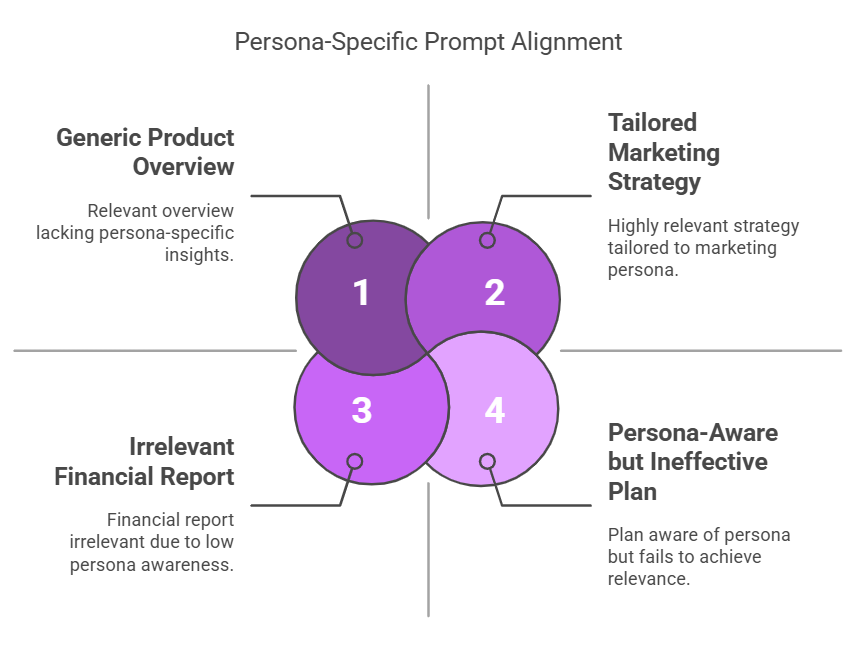 But most LLMs treat prompts generically. They don’t know:
But most LLMs treat prompts generically. They don’t know:
-
Who’s asking
-
What their role needs
-
How their success is measured
So the response lacks relevance, even if it looks polished.
Insight without intent alignment is noise. Just faster noise.
4. Sample Data ≠ Production Reality
Some platforms compensate for limited system access by showing LLMs sample rows. That’s like judging your company’s health by polling three people in the breakroom.
Sample data doesn’t reveal:
-
Nulls, outliers, duplicates
-
Suppressed fields due to masking
-
Lineage flaws introduced upstream
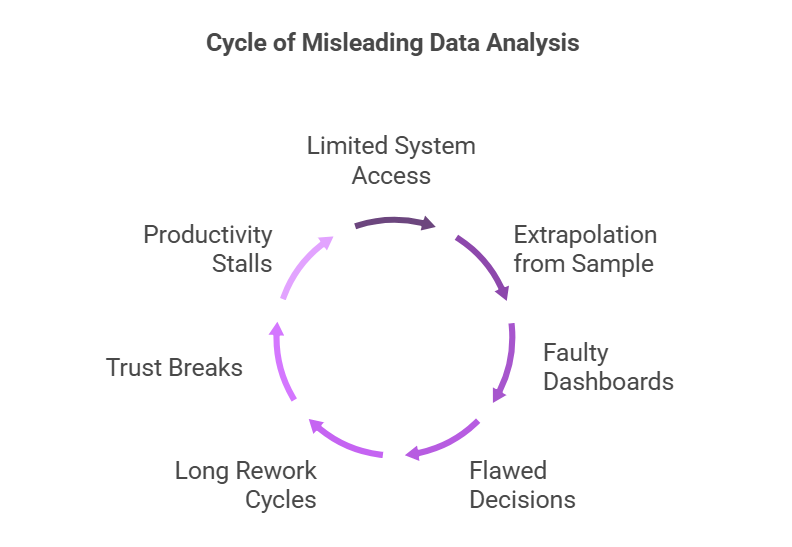 The LLM extrapolates from this toy dataset, and users unknowingly treat it as truth. The result? Faulty dashboards, flawed decisions, and long rework cycles.
The LLM extrapolates from this toy dataset, and users unknowingly treat it as truth. The result? Faulty dashboards, flawed decisions, and long rework cycles.
Trust breaks. Confidence erodes. Productivity stalls.
5. No Feedback Loop = No Organizational Learning
In real analytics, dashboards evolve through review, correction, and iteration. That loop drives maturity.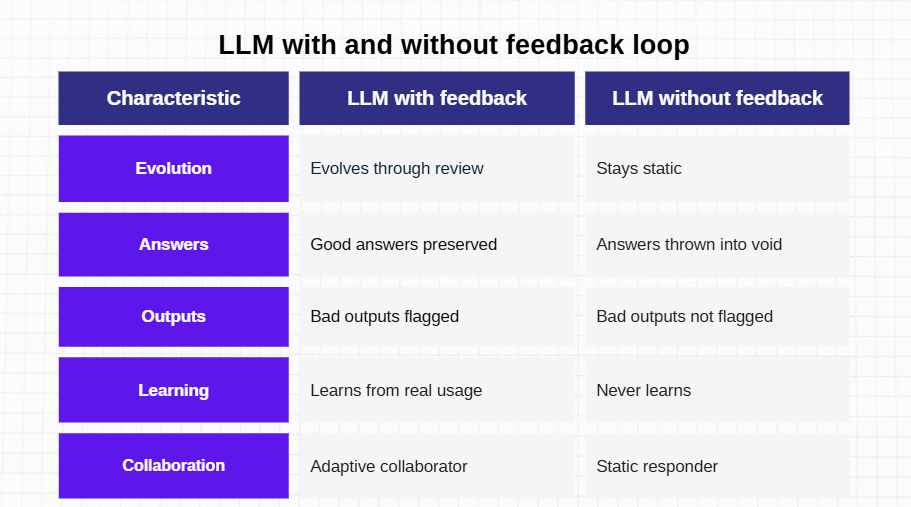
But in most LLM + catalog setups:
-
Prompts are thrown into the void
-
Good answers aren’t preserved
-
Bad outputs aren’t flagged
-
The system never learns from real usage
LLMs remain static responders. Not adaptive collaborators.
An LLM without feedback is just a fluent generator of “meh.”
What Real GenAI-Driven Data Intelligence Looks Like
To move from novelty to necessity, LLMs must operate with context, control, and continuous refinement.
Let’s look at the blueprint.
✅ 1. Build an Integrated Knowledge Graph
Move beyond static catalogs. Construct a dynamic knowledge graph that interlinks: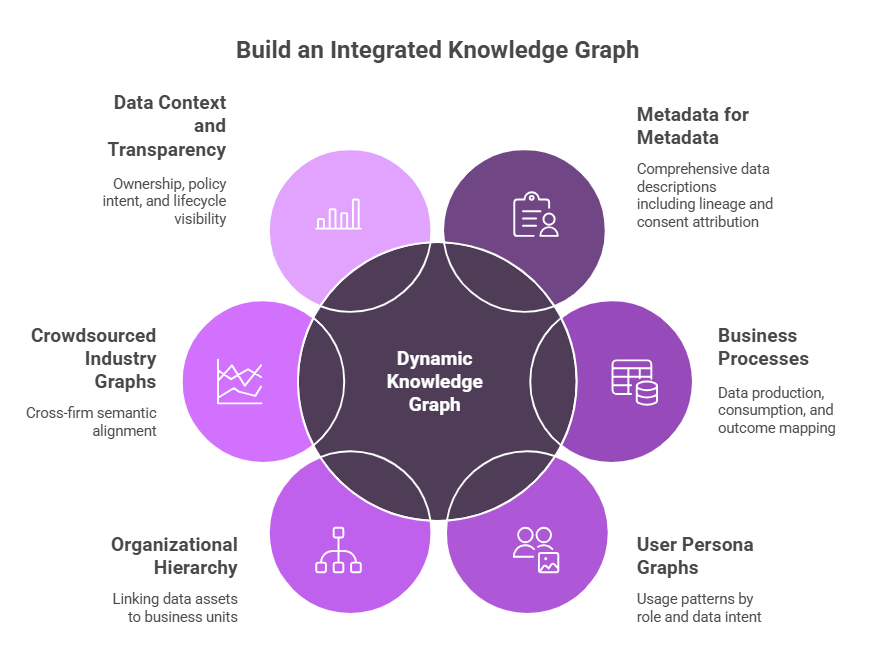
-
Enriched metadata: column types, lineage, certification status, ownership, and metadata-of-metadata (e.g., frequency of change, consent attribution).
-
Business processes: how data is produced, consumed, and mapped to outcomes.
-
User persona graphs: usage patterns by role, including entitlement, task frequency, and data intent (e.g., executive insight vs. analyst exploration).
-
Organizational hierarchy: linking data assets and usage patterns to accountable business units.
-
Crowdsourced industry graphs: cross-firm semantic alignment through community-driven ontologies.
-
Data context and transparency: track ownership, policy intent, data consent, and lifecycle visibility for every dataset.
This graph becomes the LLM’s semantic lens, transforming it from a response generator into a reasoning engine. One that understands not just what the data says—but what it means, who owns it, how fresh it is, and how it’s allowed to be used.
✅ 2. Engineer Persona-Specific Prompting
Different users ask different questions—and need different answers.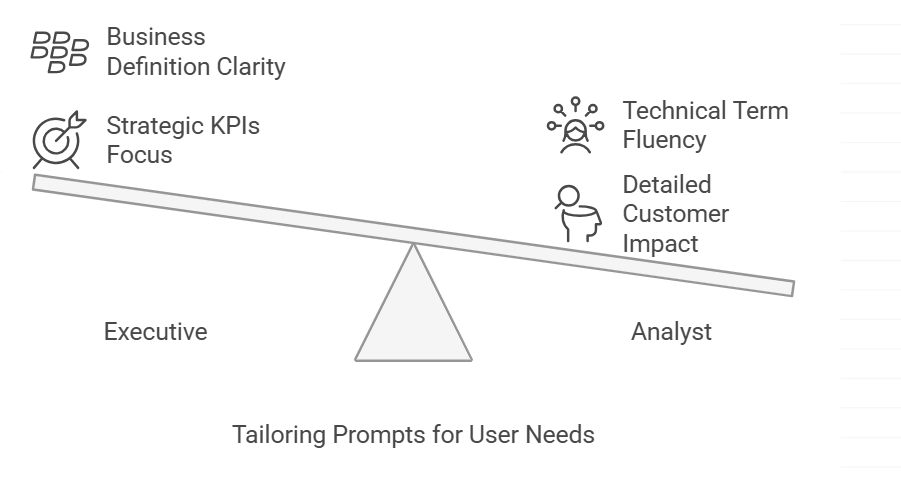
Design prompting logic that adapts to:
-
Who’s asking (executive, analyst, product owner)
-
What they care about (KPIs, customer impact, operational triggers)
-
How fluent they are in technical terms or business definitions
Governed prompting ensures relevance, trust, and reduced interpretation gaps.
✅ 3. Contextualize Data Access and Freshness
Don’t just expose tables—expose trust signals: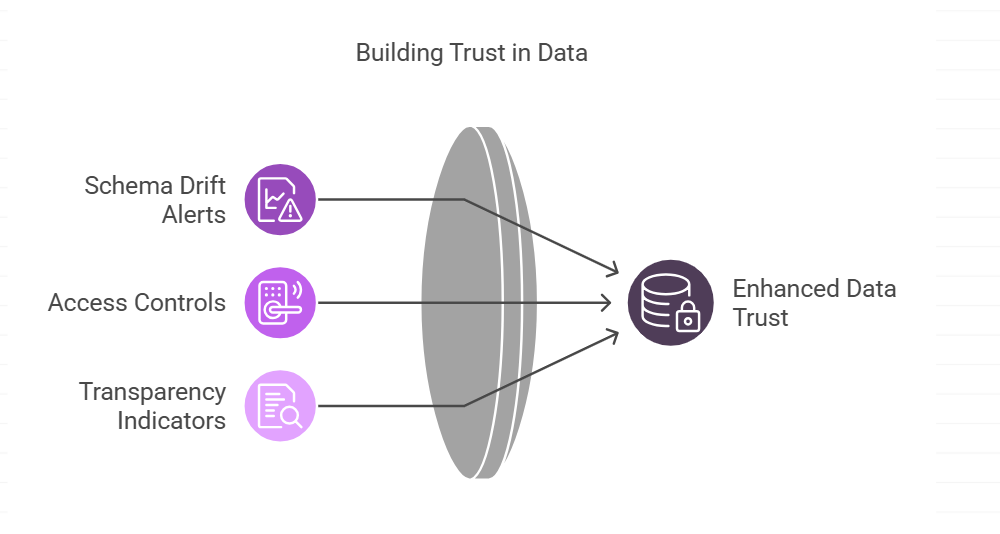
-
Alert on schema drift, pipeline lags, and deprecated fields
-
Reflect access controls, masking, and entitlements
-
Tag data with transparency indicators: Who owns it? What’s the consent model? What’s the intended usage?
Context isn’t just convenience. It’s compliance, accountability, and clarity.
✅ 4. Connect to Live, Governed Systems
Go beyond lookups. Let the LLM: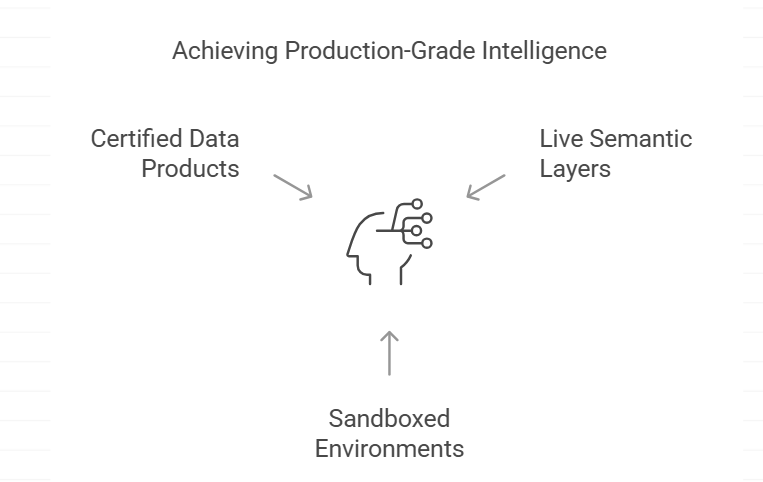
-
Query live, governed semantic layers
-
Operate in sandboxed environments with policy controls
-
Align outputs to certified data products
This is where simulation becomes production-grade intelligence.
✅ 5. Create Feedback Loops for Continuous Learning
Every LLM interaction is a signal:
-
What questions users actually ask
-
Which prompts succeed or fail
-
How often users override or refine responses
Feed this back into:
-
Prompt libraries
-
Glossary refinement
-
Semantic alignment
-
Persona-driven tuning
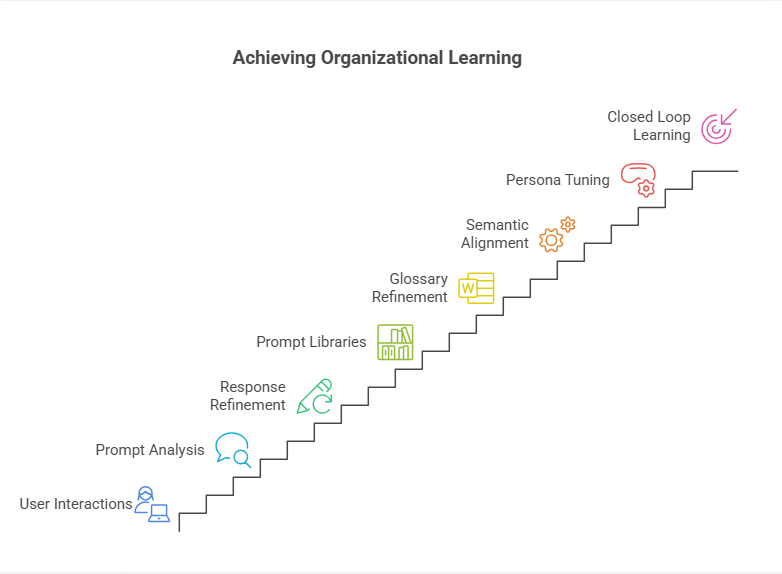
Turn every insight cycle into a closed loop of organizational learning.
Why It All Matters
The business world doesn’t need more dashboards. It needs decision confidence.
Slapping an LLM on top of a data catalog may generate responses—but without semantic awareness, governed context, and persona alignment, it introduces more noise than value.
This isn’t just a data problem. It’s an organizational design challenge.
To enable truly intelligent, responsible, and enterprise-grade AI systems, we must rewire the foundation:
-
Build integrated knowledge graphs that fuse metadata with operational reality
-
Design persona-specific prompts rooted in business roles and decision-making needs
-
Govern data with contextual transparency and real-time validation
-
And perhaps most critically—create feedback loops that let AI systems learn, evolve, and earn trust over time
Enterprises that get this right won’t just enable faster queries. They’ll unlock adaptive intelligence—at scale, with integrity.
Because in this new era, the winners won’t be the ones with the flashiest LLM integration. They’ll be the ones who turn AI from a talker into a trusted thinking partner.
Views: 5.3K

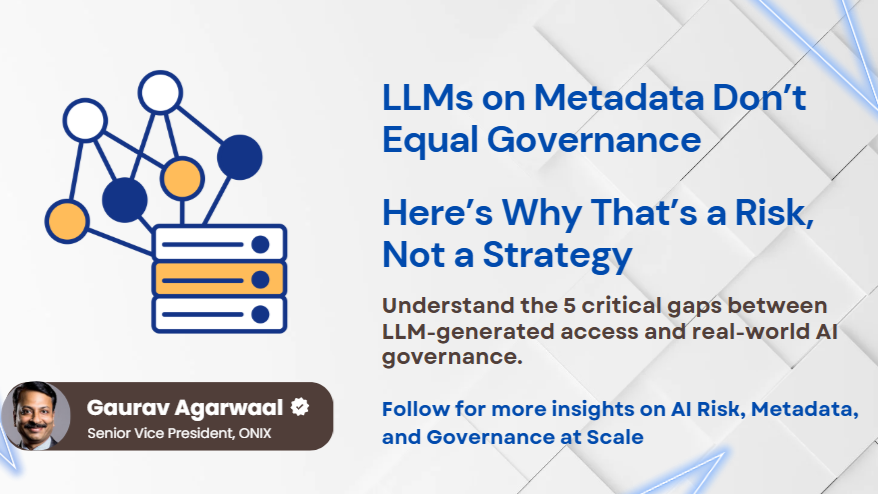





Your blog is a testament to your dedication to your craft. Your commitment to excellence is evident in every aspect of your writing. Thank you for being such a positive influence in the online community.
Thank you I have just been searching for information approximately this topic for a while and yours is the best I have found out so far However what in regards to the bottom line Are you certain concerning the supply
Your writing has a way of resonating with me on a deep level. I appreciate the honesty and authenticity you bring to every post. Thank you for sharing your journey with us.
Wow superb blog layout How long have you been blogging for you make blogging look easy The overall look of your site is magnificent as well as the content
Fantastic site A lot of helpful info here Im sending it to some buddies ans additionally sharing in delicious And naturally thanks on your sweat
I must say this article is extremely well written, insightful, and packed with valuable knowledge that shows the author’s deep expertise on the subject, and I truly appreciate the time and effort that has gone into creating such high-quality content because it is not only helpful but also inspiring for readers like me who are always looking for trustworthy resources online. Keep up the good work and write more. i am a follower.